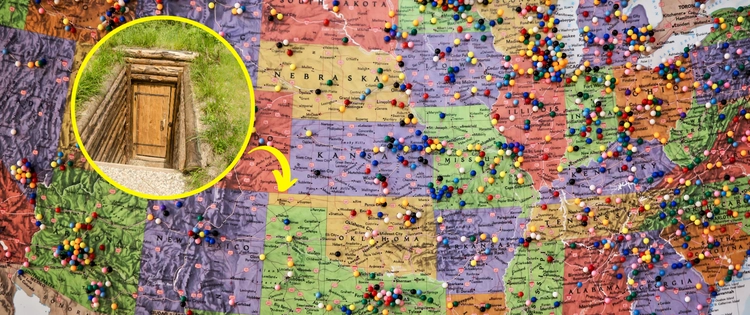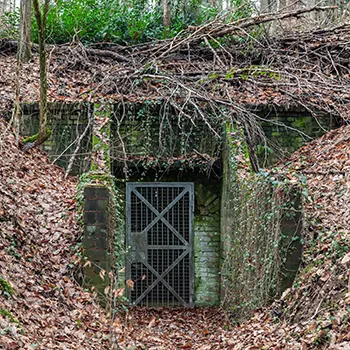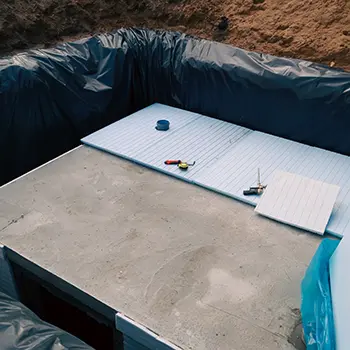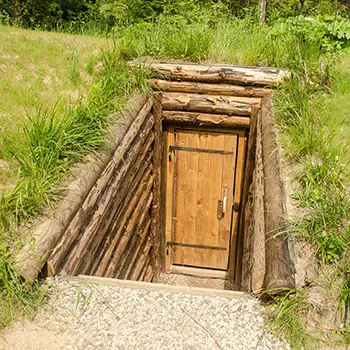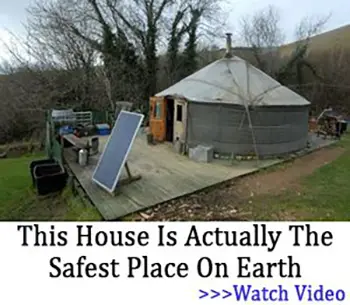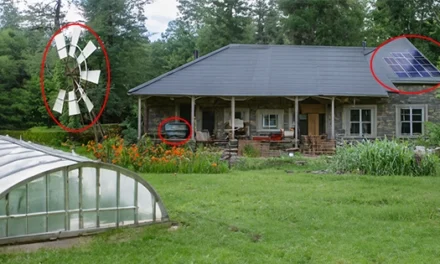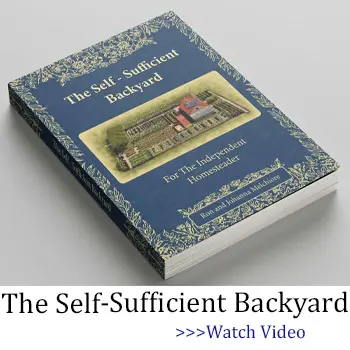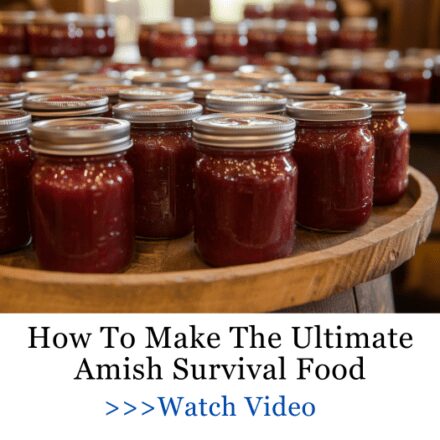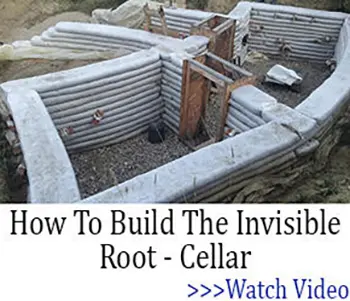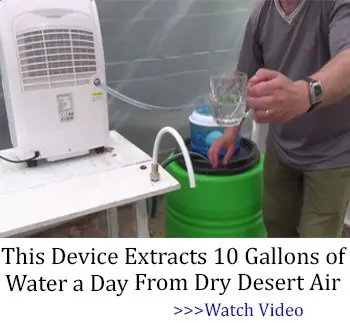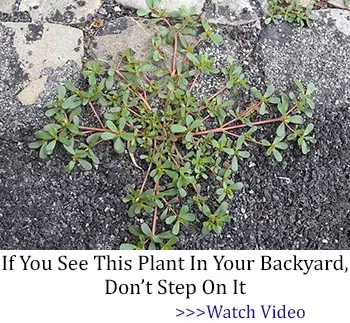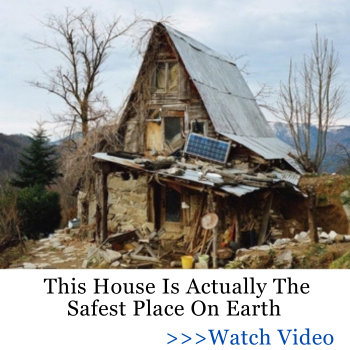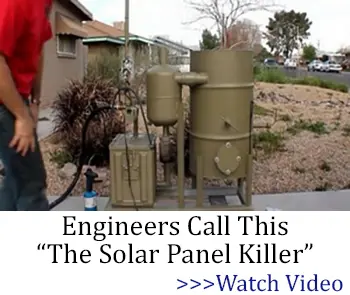Since recent events around the world, concerns over the potential use of nuclear weapons have grown. Imagine a nuclear strike occurs. Where would you and your family take refuge? The closest natural nuclear bunker may be your best bet.
This comprehensive guide explores options for locating natural underground bunkers close to your homestead and fortifying them into reliable fallout shelters. When it comes to surviving a nuclear emergency, being prepared could mean the difference between life and death.
Closest Natural Nuclear Bunker: Understanding Nuclear Fallout Basics
Before we get into finding bunker locations, let’s first understand what nuclear fallout is and how it works.
Fallout is made up of radioactive particles and debris thrown into the upper atmosphere after a nuclear explosion. These particles then “fall out” and cover the areas around the blast.
The spread and concentration of radioactive contamination depend on wind patterns, terrain, and the weapon’s yield. For example, wind can carry fallout over long distances, while terrain might concentrate or divert it. A bigger bomb results in more fallout.
As you move farther from ground zero, the intensity of fallout drops. To stay safe, focus on three things: time, distance, and shielding. Give it time for radiation to decay, put as much distance as you can between you and the fallout, and use dense materials like concrete or earth. If you’re looking for the closest natural nuclear bunker, these factors will help you find the safest spot to shelter.
This underscores the importance of a proper underground shelter to maximize all three of these radiation defenses.
Closest Natural Nuclear Bunker: Locating The One Near You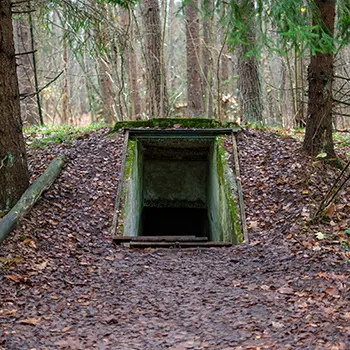
So where can you find pre-existing natural bunkers around your homestead? Surprisingly, there may be suitable underground spaces much closer than you think:
Manmade Underground Sites
- Disused mines, industrial tunnels, and storage facilities
- Remnants of Cold War-era public and private fallout shelters
- Abandoned military bunkers, missile silos, or NORAD installations
You can locate potential man-made sites by scouring online databases, topographic maps, and local town records for any listed underground facilities in your area.
Natural Underground Formations
- Cave networks, caverns, and lava tubes
- Subterranean rivers, tunnels and passages
- Abandoned quarries and excavation pits
While harder to find, natural underground spaces like these can make phenomenal nuclear shelters if located and properly outfitted.
When assessing any potential bunker site, a few key criteria should be met:
- Depth of at least 20-30 feet underground for adequate shielding
- Multiple air intake/exhaust vents for ventilation
- Accessible entries and exits (cave-ins are a big hazard)
- Ample space to stock supplies and house your household long-term
Closest Natural Nuclear Bunker: Popular Nuclear Bunkers in North America
Bunker Name | Location | Features | Notes |
Raven Rock Mountain Complex | Blue Ridge Summit, PA | Underground Pentagon | Emergency ops centers for Army, Navy, Air Force |
Mount Weather Bunker | Bluemont, VA | Extensive underground facility | Once a secret hideaway for high-ranking officials |
Cheyenne Mountain Complex | El Paso County, CO | Deep inside a mountain | Designed to withstand nuclear blasts |
Peters Mountain Site | Virginia Appalachians | Remote and discreet | Part of Continuity of Government (COG) plans |
Greenbrier Bunker | White Sulphur Springs, WV | Luxurious Cold War hideout | Now a fascinating museum |
Iron Mountain Data Center | Boyers, PA | Former limestone mine | Repurposed as a secure data storage facility |
Titan Missile Museum | Sahuarita, AZ | Decommissioned missile silo | Offers guided tours |
Weldon Spring Bunker | Weldon Spring, MO | Once stored chemical weapons | Now an eerie relic |
Seneca Army Depot | Romulus, NY | Massive underground storage | Previously held nuclear warheads |
Green Valley Lake Bunker | Green Valley Lake, CA | Hidden in the San Bernardino Mountains | Built during the Cold War |
The Bunker at The Greenbrier | White Sulphur Springs, WV | Lavish accommodations | Now open for tours |
Diefenbunker | Carp, Ontario, Canada | Not in the US, but worth mentioning | Once Canada’s top-secret nuclear shelter |
The Survival Condo | Kansas | Luxury condos in a former missile silo | Available for purchase |
Atlas E Missile Silo | Abilene, KS | Abandoned missile site | Explore the eerie underground chambers |
The Ark Two Shelter | Ontario, Canada | Massive community shelter | Constructed by a dedicated prepper |
The Vivos Group Bunkers | Various locations | Private underground communities | Membership-based survival shelters |
The 20th Century Castles | Various states | Decommissioned missile silos | Some available for purchase |
The Kansas Underground Salt Museum | Hutchinson, KS | Salt mine turned museum | Not a traditional bunker, but fascinating |
The Survival Center | McKenna, WA | Supplies and survival resources | Not a physical bunker, but a valuable resource |
Your Own Backyard Bunker | Anywhere you choose | DIY survival project | Customize it to your needs |
Assessing and Fortifying Natural Bunkers
Let’s say you’ve identified a promising underground site – before moving in survival supplies, you’ll want to thoroughly survey and reinforce the location:
Structural Assessment
Check for cracks, fissures, or any other weak spots that could lead to a collapse. Make sure the ceiling is high enough so you can stand and move around comfortably.
Also, look for any potential water seepage points to prevent flooding in your closest natural nuclear bunker.
Entry Hardening
Start by clearing any debris and rubble from the entrances and exits to ensure easy access. You might want to install reinforced blast doors or security gates for extra protection.
Also, think about building ramps, stairs, or ladders to make it easier and safer to get in and out of your closest natural nuclear bunker.
Ventilation Setup
Start by identifying ceiling holes where you can install ventilation pipes to keep the air flowing. Set up a filtered air intake and exhaust system to ensure clean air inside your shelter.
It’s also a good idea to consider backup power to run ventilation fans, so you’re prepared in case of an emergency. This will help make your closest natural nuclear bunker safe and livable for longer periods.
Supply Stockpiling
Make sure to store at least two weeks’ worth of non-perishable food and water, as you’ll need to be self-sufficient. Don’t forget warm clothing, bedding, hygiene items, and medical supplies for your comfort and safety.
It’s also important to pack tools, fuel, batteries, and backup power sources to keep things running smoothly. To maintain morale, bring along some entertainment, like books, games, and a radio. These simple steps will ensure you’re prepared, especially if you need to rely on your closest natural nuclear bunker for shelter.
Thorough planning and outfitting of the bunker will be vital, as you may end up confined for weeks or months in the aftermath of a nuclear event.
Good with hands? Then:
Closest Natural Nuclear Bunker: The One Built By You 
Here’s how:
Step 1: Dig a Trench
Locate a level spot at least 50 feet from buildings or trees to dig your lifesaving trench. Dig a 3-foot wide, 5-foot deep trench with an extra 11 feet of length to accommodate 4 people. Add 3 more feet per additional person.
Step 2: Entrances and Ventilation
At one end, dig a 5-foot sloped entrance for easy access. On the opposite side, create a 2×3.5-foot ventilation crawlspace tunnel near the surface for airflow and an emergency exit path.
Step 3: Weather Protection
Once trenched, drape waterproof tarps over each end to shed rain and fallout debris. Secure them to form an overhead canopy sheltering the interior.
Step 4: Overhead Support
Position wooden logs or poles across the top, overhanging the edges by a foot to help bear the soil’s weight above. Around 20 logs should be enough for an average shelter.
Step 5: Seal Gaps
Seal any cracks between the logs with leaves, cloth, or other materials to block dirt filtration.
Step 6: Soil Insulation
Mound 18 inches of your excavated soil over the top of the log with plastic sheeting, then add another 18-inch soil layer for radiation shielding. For about $500 in basic supplies from any hardware store, you’ve constructed a legitimate, life-saving fallout bunker right in your own backyard.
A small price for the ultimate homestead insurance policy! Make sure to check local legislation before any construction.
Can’t Secure a Bunker?
If you can’t build or find a shelter, look for the closest natural nuclear bunker. A basement or the inside of a concrete structure can provide some protection. However, an underground basement with a dirt cover is even better.
Why? The heaviest radiation goes down first, and the dirt helps block it. Soil insulation gives your DIY shelter an edge over brick or concrete.
While it’s not as strong as a military bunker, your custom fallout shelter could be the key to keeping your family safe—or leaving them exposed.
Closest Natural Nuclear Bunker: Balancing Preparedness and Practical Concerns
There’s a balance to strike when it comes to nuclear prepping. On one extreme, you have the hardcore “doomsday preppers” devoting their lives to surviving an all-out apocalypse. On the other, the blissfully unaware majority put zero thought into emergency preparedness.
The wise homesteader charts a prudent middle path, rationally considering likely scenarios.
How To Reduce Your Monthly Electricity Bills By Up To 60% (Video)
50 Items To Shop For At The Thrift Store Or Yard Sale

